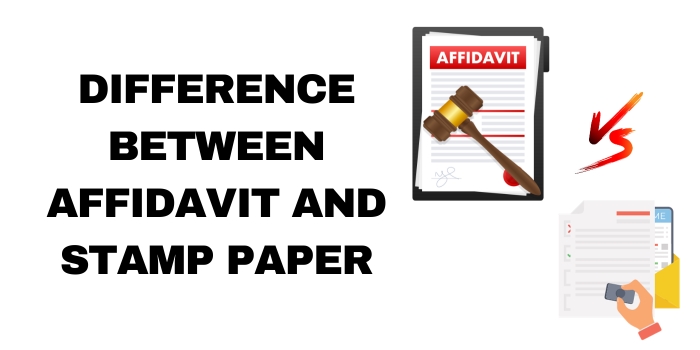
Table Of Contents
- Affidavit: A Sworn Testimony
- Stamp Paper: Legal Validity in Writing
- Differences and Use Cases
- Conclusion
Legal documentation often involves terms that may seem perplexing to the uninitiated. Two such terms that are frequently encountered are “affidavit” and “stamp paper.” In this blog, we will unravel the distinctions between these two legal elements, shedding light on their purposes and significance.
Affidavit: A Sworn Testimony
An affidavit is a written declaration or statement of facts voluntarily made by an individual under oath or affirmation. This legal document holds weight in court proceedings, as it serves as evidence of the truthfulness of the statements provided. Affidavits are commonly used in various legal matters, including court cases, real estate transactions, and immigration processes.
Key Features of an Affidavit:
- Sworn Oath: Affiants, the individuals making the statements, typically swear or affirm that the information in the affidavit is true to the best of their knowledge.
- Notarization: Affidavits are often notarized by a notary public to add an extra layer of authenticity. Notarization involves an official witness verifying the affiant’s identity and confirming that the oath or affirmation was administered.
- Legal Consequences: Falsifying information in an affidavit can lead to legal consequences, as it is considered perjury.
Stamp Paper: Legal Validity in Writing
On the other hand, a stamp paper is a document used for creating legal agreements or contracts. It is essentially paper that bears a stamp or a special mark indicating that a particular value of stamp duty has been paid. Stamp duty is a tax levied by the government on various legal documents to make them legally valid.
Key Features of a Stamp Paper:
- Stamp Duty Payment: The value of the stamp duty is determined by the nature of the document and the laws of the relevant jurisdiction. The payment of stamp duty is a legal requirement, and the stamp paper serves as evidence of this payment.
- Legal Validity: Documents executed on a stamp paper are considered legally valid and admissible in court. This includes agreements, deeds, and other legal instruments.
- Stamping Authority: Stamping of the paper is often done by authorized agencies or government offices. The stamping authority ensures that the correct amount of stamp duty has been paid.
Differences and Use Cases
- Nature of Content:
- Affidavit: Primarily contains statements of fact or information provided under oath.
- Stamp Paper: Used for a variety of legal documents, including agreements, contracts, deeds, and other instruments.
- Legal Formalities:
- Affidavit: Focuses on the truthfulness of the information and may require notarization.
- Stamp Paper: Requires payment of stamp duty to confer legal validity, and the stamping process is often overseen by a designated authority.
- Purpose:
- Affidavit: Used to provide sworn testimony or evidence in legal matters.
- Stamp Paper: Used to create legally binding agreements and documents.
Conclusion
In essence, while both affidavits and stamp papers are integral components of legal documentation, they serve distinct purposes. An affidavit is a sworn statement providing evidence, while a stamp paper, marked with paid stamp duty, lends legal validity to various agreements and contracts. Understanding these differences is crucial for navigating the legal landscape, ensuring that documents are not only truthful but also legally enforceable.
Suggested Blog: